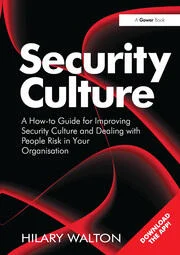Study Says Higher Wages For Retail Workers Decreases Employee Theft
The higher the wages of retail workers, the less likely they are to steal store merchandise, according to a new study.
Using data sets from the convenience-store industry, Clara Xiaoling Chen, a professor of accountancy, and co-author Tatiana Sandino, of the University of Southern California, found that after controlling for each store’s employee characteristics, monitoring environment and socio-economic environment, relative wages – that is, wages relative to those received by other employees performing similar jobs in the same sector and region – were negatively associated with employee theft.
While previous studies have focused on the effect of higher wages on employee effort or turnover, Chen and Sandino document the effect of higher wages on employee theft as measured by cash shortage and inventory shrinkage.
“There’s actually very little research on the effect of wages on employee theft,” Chen said. “A seminal study conducted in the field has examined what happens after a firm cuts workers’ pay. What’s different in our paper is that there’s no such shock as a pay cut, whose effect is typically short-lived and does not persist. The fact that we can document the relation in our study using cross-sectional data suggests that the effect of wages on employee theft can persist over time.”
The researchers argue that paying relatively higher wages discourages employee theft for two reasons. First, employees receiving higher wages are less inclined to commit theft because they wish to retain their higher-paying job or as a gesture of positive reciprocity. Second, firms that offer relatively higher wages may attract a higher proportion of honest workers.
There is also a “wage tipping point” for employers to consider, when the cost of paying more toward employee wages is greater than the cost of employee theft.
“An interesting result of our study is that the benefit of reducing the amount of employee theft accounted for by cash shortage and inventory shrinkage does not, by itself, outweigh the cost of paying a wage premium,” Chen said. “It accounts for about 39 percent of the cost of a wage increase. If you add other benefits like reduced turnover, reduced training costs and greater efforts, the benefits of paying a wage premium may outweigh the costs. So an employer may find it beneficial to raise employee wages if other benefits from wage increases translate into at least 61 percent of the cost of the wage increases.”
The researchers also found that relatively higher wages promote social norms so that co-workers were less likely to collude to steal inventory.
“We show that the effect of relative wages on employee theft is more pronounced when there are multiple workers,” Chen said. “Relative wages influence the type of norms that develop among the co-workers. So in industries or businesses that use multiple workers to staff a store or a retail outlet, it’s even more beneficial to pay a wage premium.”
Although compensation practices can shape the social context of a work group, Chen cautions that the study does have some limitations.
“The measures we used to capture employee theft are not perfect because, for instance, inventory shrinkage could also be a result of customer shoplifting,” she said. “But it’s the best we could get, because it’s very difficult to get an exact measure of employee theft. That’s why there needs to be more research done in this area.”
The results of the study have important practical implications for managers, as employee theft accounts for $200 billion in losses for U.S. businesses annually.
“Our research provides systematic empirical evidence that wage premiums do play a role in reducing employee theft and fostering more ethical norms within an organization,” Chen said. “The takeaways from our study are likely to apply to other types of retailers, such as restaurants, department stores and drug stores, and to service or consumer products firms with similar monitoring environments, where the payoffs from stealing are not disproportionately high relative to potential wage premiums.”
If an employer can’t afford to pay higher wages, Chen says there are other ways to induce positive reciprocity among employees.
“You can show that you care about the workers, and you can find other ways outside of compensation to recognize their efforts,” she said. “Paying employees higher wages is not the only way to cultivate positive reciprocity, but it certainly is a good way to foster employee loyalty and honesty.”
The research will be published in a forthcoming issue of the Journal of Accounting Research.
Looking for a reprint of this article?
From high-res PDFs to custom plaques, order your copy today!





